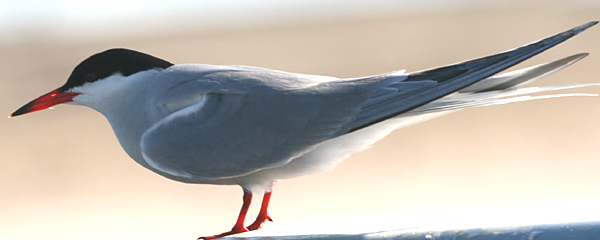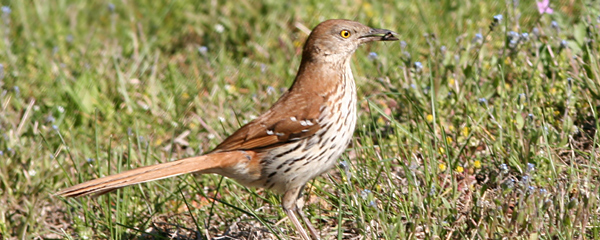We’ve been rocking warblers so hard this May (I sound like a teen there, don’t I?) that all of a sudden, I found myself in the mood for shorebirds. Weird, right? I know that I’m supposed to be eyeing sandpipers and the like around August, but there are some shorebirds that are just better before summer begins, at least in New York. Red Knots, for example, never look more splendid in salmon than they do in spring, cavorting in the chill Atlantic while noshing on horseshoe crab eggs. I’ve got exactly one clutch seasonal spot for knots, by which I mean I’ve seen Red Knot in spring exactly once, and it was at the trusty old Coast Guard Station at Jones Beach. So imagine our consternation when Corey and I arrived at Jones Beach indecently early only to discover that the West End, home of the Coast Guard Station as well as reliable Piping Plover nests on the ocean side, was off-limits due to some air show? DISASTER!
As you might surmise, it takes a lot more than a few barricades to deter these birders from their appointed rounds. In the absence of an acceptable alternative, we decided that we HAD to get on the West End, Air Show be damned. All it took was some fancy maneuvering, firm negotiation, and implacable will but when the dust settled, the West End belonged to just us and the Coast Guard. Oh, and some worthy birds!
The sandbar to the right of the Coast Guard Station was crawling with petite peeps like Sanderlings and Least and Semipalmated Sandpipers. Putting the scope on the scattered shorebirds revealed Ruddy Turnstones bedecked in their rich rufous and jet breeding plumage. Dunlins were there too, as were Willets and American Oystercatchers. It appeared at first that the knots were not, but it was only a matter of minutes before one colorful specimen made the scene. And as a bonus, alongside the many Black-bellied and Semipalmated Plovers popped up one pale Piping Plover, saving us a hike across the sand. We even noticed unexpected waterfowl like Long-tailed Duck and some sort of loon.
Having spotted just about every shorebird we could expect in short order along with all the usual gulls and reliable terns like Common, Forster’s, and Least but not Gull-billed, we turned our jaundiced eye back to the real excitement of the season: migratory passerines. With the wind blowing out of the north, it was a safe bet that birds coming off the ocean would need to rest a while in the magical thickets and hedgerows populating this barrier island. I guess that’s why we were able to sort through the usual Yellow, Yellow-rumped, and Yellowthroats to get posh warblers like Magnolia, Blackpoll, Bay-breasted, and Tennessee, that last my first in the ABA region! Scarlet Tanager, Rose-breasted Grosbeak, Boat-tailed Grackle, and all the sparrows, swallows, and mimids you could want made for a fantastic morning of birding. Once the military aircraft came roaring in, we honored our end of the bargain we’d struck and made tracks, admiring a soaring Peregrine Falcon as we relinquished Jones Beach to skywatchers of a different sort. The effort, imperiled almost before it began, turned out exceedingly well, revealing a multi-headed moral that preaches that you’ve got to pick your spots carefully and then pursue them relentlessly. After such lavish rewards, I’m disposed to remember this lesson well.















Nothing beats a Red Knot and a Bay-breasted Warbler within twenty minutes. Ok, maybe if we had found a Yellow-breasted Chat…
Corey: A Prothonotary Warbler and a Bristle-thighed Curlew within 20 minutes. Not that I would know from personal experience, but these two spring to mind.